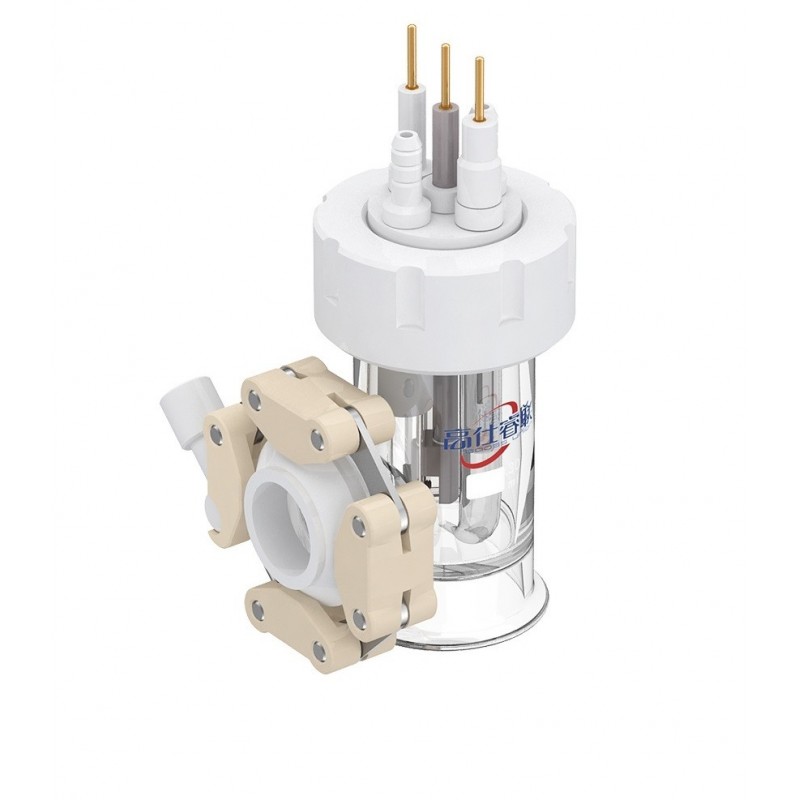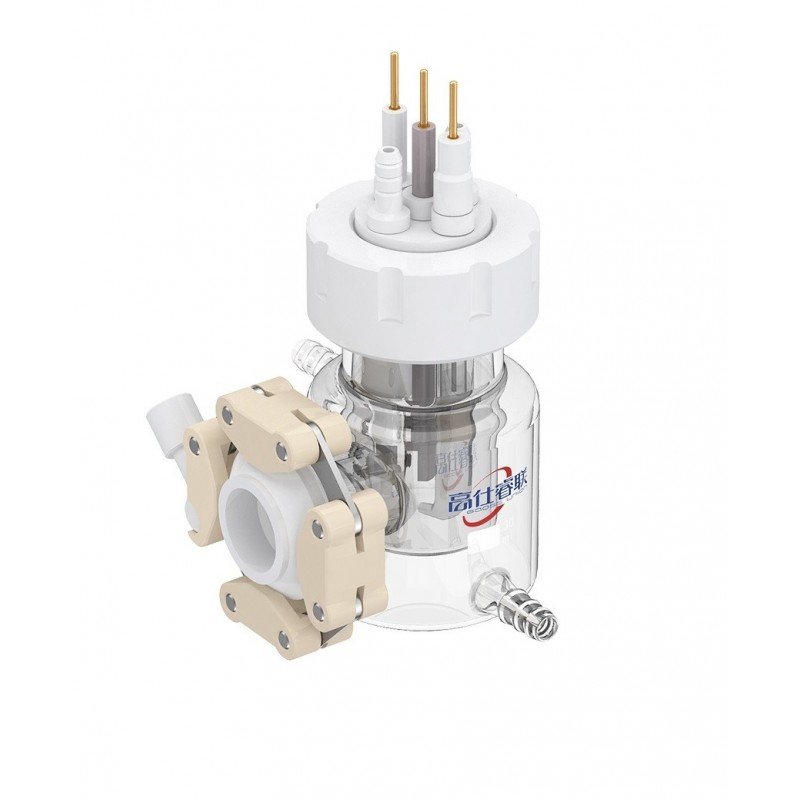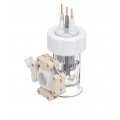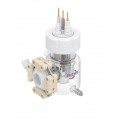Electrochemical Cells




C019 side light electrochemical cell-2
1. The cell body material of the electrolytic cell is high borosilicate glass
2. The light window of the electrolytic cell is made of quartz, the light transmittance is greater than 95%,
3. The light window part of the electrolytic cell is connected with the cell body with a lock ring to ensure sealing, and the quartz light window can be replaced quickly and conveniently.
4. This electrolytic cell is often used in a three-electrode system. The volume of the electrolytic cell ranges from 30ml to 500ml and can also be customized according to requirements.
5. The working electrode, auxiliary electrode and reference electrode of the electrolytic cell can be matched according to the needs. All the electrodes must be lengthened.
6. The electrolytic cell is a relatively sealed electrolytic cell system,
7. The glass sealing part of the electrolytic cell adopts an external threaded port design, and the inner core adopts a 360-degree rotating polytetrafluoro Zene, so that the electrode accurately corresponds to the light window, and is sealed by tightening the outer cover of POM material.
8. The sealing of the electrode part of the electrolytic cell is realized on the PTFE plug, and the sealing effect is achieved by squeezing the O ring by the sealing screw
9. The electrolytic cell is equipped with an aeration device that can ventilate below the liquid surface, and the atmosphere is carried out according to different experiments.
10. The electrolytic cell can add a sampling port on the cell body, and an additional cost is required at this time. 11. The electrolytic cell is a relatively sealed system. If an absolute sealing method is required, a valve must be added to the lid of the electrolytic cell. Please refer to C019-2 model.
12. The electrolytic cell is divided into two types: single-layer and double-layer
13. The double layer adds the function of a constant temperature water bath on the basis of the single layer. The constant temperature water is continuously passed into the jacket layer of the electrolytic cell to make the measured solution in the electrolytic cell reach a constant temperature effect.


